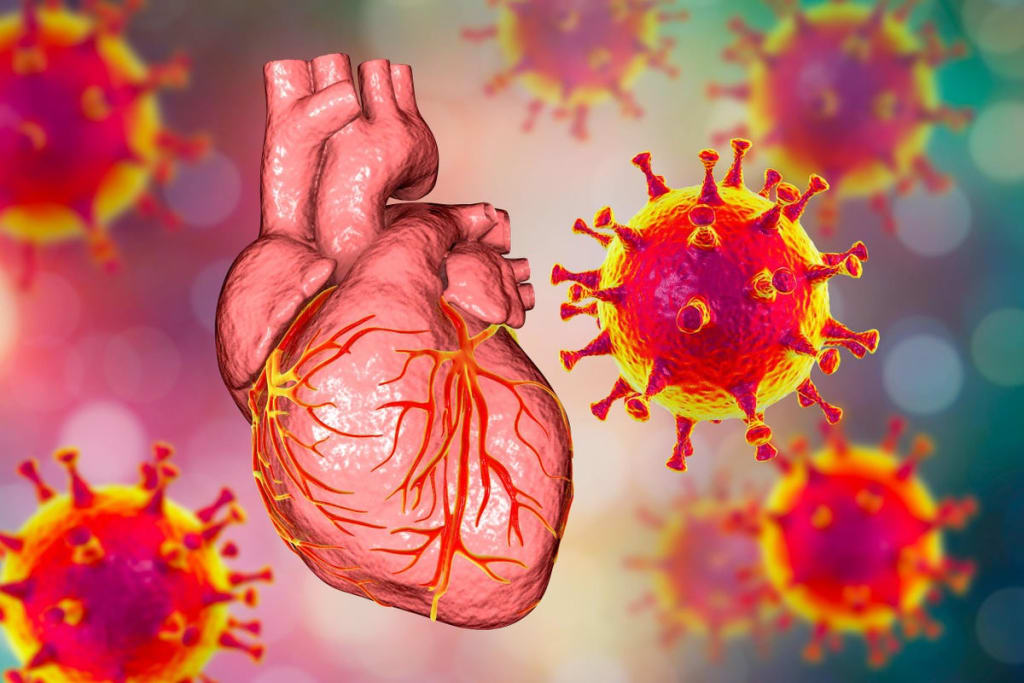"The Silent Killer: Understanding Cardiovascular Disease and How to Reduce Your Risk"
Understanding the Risk Factors and Effective Strategies for Prevention and Management of Cardiovascular Disease.

Introduction:
Cardiovascular disease (CVD) is the leading cause of death worldwide, accounting for nearly one-third of all deaths. CVD encompasses a wide range of conditions that affect the heart and blood vessels, including coronary artery disease, heart failure, and stroke. While certain risk factors such as age and family history cannot be changed, there are many lifestyle factors that can be modified to reduce the risk of CVD. This comprehensive guide will provide an in-depth understanding of CVD, its risk factors, and strategies for prevention.
Section 1: Understanding Cardiovascular Disease
Cardiovascular disease is a complex condition that can take many forms. The term encompasses a variety of conditions that affect the heart and blood vessels, including coronary artery disease, heart failure, and stroke. In coronary artery disease, the coronary arteries become narrowed or blocked, reducing blood flow to the heart and increasing the risk of heart attack. Heart failure occurs when the heart is no longer able to pump blood effectively, leading to fatigue, shortness of breath, and other symptoms. Stroke occurs when the blood supply to the brain is interrupted, leading to damage or death of brain cells.
The prevalence of cardiovascular disease is high and continues to rise. According to the World Health Organization, an estimated 17.9 million people die from CVD each year, representing 31% of all global deaths. In the United States, CVD is responsible for one in four deaths, with an estimated 655,000 Americans dying from the condition each year.
The causes of CVD are complex and multifactorial. While certain risk factors such as age and family history cannot be changed, there are many modifiable risk factors that can be addressed to reduce the risk of developing CVD. These include smoking, high blood pressure, high cholesterol, diabetes, obesity, physical inactivity, and poor diet.
Symptoms of cardiovascular disease can vary depending on the type and severity of the condition. Common symptoms of coronary artery disease include chest pain, shortness of breath, and fatigue. Heart failure can cause fatigue, shortness of breath, swelling of the legs and ankles, and rapid or irregular heartbeat. Symptoms of stroke can include sudden numbness or weakness in the face, arm, or leg, difficulty speaking or understanding speech, and sudden vision loss.
Diagnosis of CVD typically involves a combination of medical history, physical exam, and diagnostic tests. These may include blood tests, electrocardiogram (ECG), echocardiogram, stress test, and coronary angiogram.
Section 2: Risk Factors for Cardiovascular Disease
There are many risk factors for cardiovascular disease, both modifiable and non-modifiable. Non-modifiable risk factors include age, gender, and family history. Men are at a higher risk of developing CVD than women, and the risk increases with age. Family history of CVD can also increase the risk of developing the condition.
Modifiable risk factors for CVD include smoking, high blood pressure, high cholesterol, diabetes, obesity, physical inactivity, and poor diet. Smoking is a major risk factor for CVD and can increase the risk of developing the condition by up to four times. High blood pressure, or hypertension, is another major risk factor and can damage the arteries and increase the risk of heart attack and stroke. High cholesterol, specifically high levels of low-density lipoprotein (LDL) cholesterol, can cause plaque to build up in the arteries and increase the risk of heart disease. Diabetes can also increase the risk of CVD, as high blood sugar levels can damage the blood vessels and increase the risk of heart attack and stroke. Obesity and physical inactivity can both contribute to the development of CVD, as they can lead to high blood pressure, high cholesterol, and insulin resistance. Poor diet, specifically a diet high in saturated and trans fats, added sugars, and sodium, can also increase the risk of CVD.
Section 3: Strategies for Prevention and Management of Cardiovascular Disease
Prevention and management of CVD involve addressing modifiable risk factors through lifestyle changes and medication, as well as treating underlying medical conditions. Lifestyle changes include quitting smoking, maintaining a healthy weight, engaging in regular physical activity, following a healthy diet, and managing stress. Quitting smoking can reduce the risk of CVD by up to 50%, and maintaining a healthy weight and engaging in regular physical activity can help lower blood pressure, improve cholesterol levels, and reduce the risk of CVD. Following a healthy diet, such as the Mediterranean diet or the DASH diet, can also help reduce the risk of CVD by promoting heart-healthy foods such as fruits, vegetables, whole grains, lean protein, and healthy fats. Managing stress through relaxation techniques and stress-reduction strategies can also be beneficial for preventing CVD.
Medications can also be used to manage and prevent CVD. These include blood pressure-lowering medications, cholesterol-lowering medications, and medications to manage diabetes. In some cases, surgery or other medical procedures may be necessary to treat underlying conditions such as coronary artery disease or heart failure.
Section 4: Conclusion
Cardiovascular disease is a complex condition that affects millions of people worldwide. While certain risk factors such as age and family history cannot be changed, there are many modifiable risk factors that can be addressed to reduce the risk of developing CVD. These include quitting smoking, maintaining a healthy weight, engaging in regular physical activity, following a healthy diet, managing stress, and treating underlying medical conditions with medications or medical procedures. By taking steps to prevent and manage CVD, individuals can improve their heart health and reduce their risk of developing this leading cause of death.
Click here to know more.
About the Creator
Paul Andrew
I'm a storyteller & content writer with 2 years of experience. Crafting engaging articles & blog posts on a variety of topics. Let's explore the world through my words!






Comments
There are no comments for this story
Be the first to respond and start the conversation.